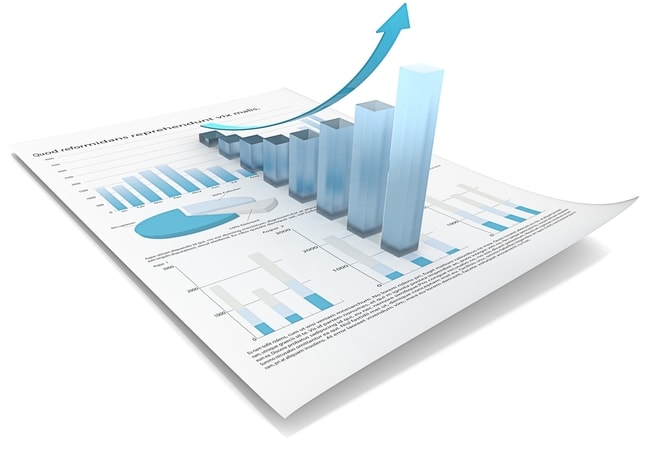APA 7th Edition Writing Services for Dissertations
The 7th edition of the APA publication manual was released in the year 2019, with various significant developments and changes from the 6th edition. The manual presents numeral updates and additional features aimed at enhancing the usefulness of the APA writing style to scholars, researchers, and all the relevant stakeholders in the academic sector. The changes brought about by this development in APA style are most relevant to scholars and tutors, and include changes in academic paper formatting, citation of sources, among others, that are discussed in this article.
Benefits of Using APA Writing Style
The APA writing style has various advantages which include the following:
- It makes written scholarly material easier for the audience to read and understand.
- The APA guidelines regarding mechanics and style helps in enhancing communication skills demonstrated through excellent writing.
- The style helps in avoiding plagiarism in academic writing by offering a typical and dependable system of giving credit to the original authors of cited sources.
- APA writing style is the most accepted and used style in publishing professional materials.
- It gives a direct style of structuring academic research papers and encourages comprehensive explanation, and reporting of the original ideas of the research.
- Using APA writing style guarantees overall uniformity in the structure of the paper and consistency in citation formatting.

The Factors to Consider in the APA 7th Edition Writing Style
There are various basics of the 7th edition that poses a few changes in the elements of the APA writing style from the 6th edition. These include the format and organization of paper elements, academic writing style, grammar and usage, style mechanics, tables and figures, in-text citations and paraphrasing, the format and order of reference lists. These factors are detailed below.
1. Paper Formatting and Organization
The following are the 7th edition guidelines on formatting and organizing academic papers.
The Title Page
According to this new edition manual, different title pages for students and professionals are recommended. For Professionals, the title page should be comprised of the following components:
- The paper title or subject.
- The author(s) name.
- Author(s) affiliation.
- A running head.
- Page number.
As for the students, it is recommended that they comply to their tutors’ instructions on formatting their title pages. However, if no guidelines are given, the APA students’ title page can be used. It includes:
- The paper subject or title.
- Paper author(s) name.
- The author(s) affiliation or the school attended.
- Course number.
- Instructors name and title.
- Due date for submitting the assignment.
- Page number.
Levels of Heading
The role of headings is to direct the reader when reading written material. The heading levels should be organized in their order of subordination. In APA 7th edition manual, only level three, four, and five headings have been changed. Title cases where important words start with capital letters and boldface are the new recommendations for all headings, distinguished by using italics, periods, and indentation. The heading levels in this edition should be as follows:
- Level One Heading
In this heading level, the title case heading is centered and boldface. Important words of the paper title start with capital letters and writing text starts on a new paragraph.
- Level Two
When formatting headings in level two, the text begins on a new paragraph after a flush left, boldface, title case heading, whose first letters of important words are capitalized.
- Level Three
In this level, a flush left, boldface, title casing format is followed, and the text should be written beginning on a new paragraph.
- Level Four
Level four heading involves an indented, boldface title case that ends with a period. Here, the text begins and caries on the same line as a regular paragraph.
- Level Five
In this level, the title is intended, boldface, italic title case heading that ends in a full stop. Like in level four, the text starts on the same line and progresses as a regular paragraph.
Other Formatting Changes Not Associated with Headings
Other additional alterations according to the 7th edition recommendations include:
- No running heads for students’ papers.
- A running head entirely written in capital letters is included in professional papers.
- Labeling the abstract and reference lists sections should be written in title case, boldface, and centered.
- A variety of fonts are acceptable, but with consistency throughout the text.
2. Grammar and Writing Style
The major changes in the writing style and grammar as per the APA 7th edition manual are related to use of pronouns. The recommendations are as follows:
- The pronoun “they” is endorsed as a singular pronoun, and should be used for an individual whose gender is irrelevant or unknown.
- The derivatives of “they”, such as “them”, “their” or “themselves” should be used accordingly for a person who uses “they” as a personal pronoun; along with plural forms of the proceeding verbs.
- No use of personifying language when referring to animals and inanimate things, hence; “that” and “which” are used instead of “who”.
3. Language that is Bias-Free
To avoid bias when describing people in terms of features such as age, gender, disability, racial and ethnic identity, several recommendations have been put in place by the 7th edition of the APA manual. These include:
- Using the person-first language when describing people with certain conditions.
- Using adjectives to describe specific nouns or using descriptive noun phrases is preferred over using the adjectives to describe a group of people. For instance, using the phrase “people living with epilepsy” is preferred to the “epileptics”.
- Where possible, specific labels should be used rather than general ones.
- The qualities that are applicable to the situation at hand should be focused on when unfolding variances between groups of people.

4. Mechanics and Style
The major changes recommendation in the 7th edition as far as mechanics is concerned include the following:
- Unless otherwise dictated by a tutor or a publisher, one space should be used after the full stop at the end of a sentence.
- When giving linguistic examples, the example should be enclosed in quotation marks rather than highlighting it in italics.
These guidelines appear in chapter six of the APA 7th edition manual.
5. Figures and Tables
A few relevant changes from the 6th edition have been recommended for figures and tables in the 7th edition of the APA style manual. These include:
- Tables and figures in the new edition should be consistent with rules for titles, notes, and numbering; also known as parallel formatting.
- There is an option of choosing when to present the tables or figures relevant in one’s paper, either in the text, or after writing the reference list of the document, but on a separate page.
6. In-Text Citations
In-text citations are discussed in the eighth chapter of the seventh APA edition manual that recommends the following updates and changes from the sixth edition.
- All sources with three or more authors, regardless of the medium, are recognized using the first author’s name, followed by “et al.”
- Verbal narrations and traditional information from native people are now regarded as a discrete source category. When citing the source, the name of the indigenous groups or nations, and most terms derived from the culture capitalized. However, this knowledge is only reproducible with authorization from relevant indigenous stakeholders.
- Research respondents’ quotations should be formatted like normal quotations but there should be no in-text citations or reference list for them.
7. List of References
There are only a few changes in the 7th edition concerning electronic sources. These include:
- Use of Digital Object Identifiers(DOI) as well as Uniform Resource Locator(URL) as hyperlinks for electronic sources.
- For the entries containing DOI, the label is no longer used.
- When the date of retrieval is given in the citation, only then are the words “retrieved from” are used.
- The citation entries end with a period, then the DOI or URL is provided.
Formatting the Reference list in APA style
The reference list is written at the end of the paper, giving direction information for the readers to be able to retrieve the sources cited from the text of the paper. Each entry into the list of references must have been cited in the body of the paper, and every in-text citation must be entered in the reference list. The list of references should start on a new page, after the text, labeled “References,” bolded, and centered, with double spacing. No quotations or underlining should be included in the reference title.
Basic Rules for Citing Sources
When citing sources, the following guidelines should be kept in mind.
- After the first line of each entry, each line should have a hanging indentation.
- When writing the author(s) names, the last name should appear first.
- The first and middle names of the author should appear as initials. However, if the author’s middle name is missing, then only the first name should be written as an initial.
- According to the 7th edition APA manual, if a source has up to than 20 authors, one should write the names of up to the 20th author; and use a comma to separate initials of each author to the last name of the next author. An ampersand is then inserted before writing the last authors name. For those sources with more than 21 authors, an ellipsis is inserted after the 19th author, followed by the final author’s name.
- Using the authors last name, the list of references should be arranged in an alphabetical order.
- If the same author has many articles, a chronological order should be used to arrange them, starting from the earliest.
- Capital letters should only be used on the first word of the title/subtitle, the first word after a dash/colon in the title, and proper nouns when writing titles for articles, chapters, books, or webpages.
- When citing shorter works, there should be no use of italics, underlining, or quotations.
General guidelines when Citing Articles in Academic Journals
- The titles for the journal should be written in full.
- The journal titles should be put I italics.
- In the journal title, there should be consistency in the use of specific punctuation and capitalization.
- All the most important words in the academic journal titles are capitalized.
- The first word of the titles, subtitles, the first word after a colon or dash, and proper nouns is capitalized.
- The article title should neither be italicized, underlined, or enclosed in quotes.
8. Paper Organization
The first line of the first page of the text should be a repetition of the title of the paper. The title is bolded and centered. However, the term “introduction” should not be included in the heading. The first line of the text should be started on a double-spaced line after the title. For sub-sections in the introduction, level two headings should be used.
In the text section, heading levels should be used accordingly, with Level one headings for major sections after the after the introduction.
Each major section, including methods, results and discussion, conclusion among others should start on a new page. The sections should appear starting from the title page, abstract, text sections, references, tables and figures, and appendices where necessary.
General Rules of Formatting a Paper According to the 7th Edition Manual
Below are the formatting guidelines given in the seventh edition of the APA manual.
- The margins should be one inch, from top, bottom, right, and left.
- The 7th edition now allows use of more font types and sizes. However, most tutors prefer the New Times Roman, size 12. It is therefore prudent to consult one’s tutor for directions.
- There should be double spacing between lines, throughout the paper, including title pages and references.
- Unless instructed otherwise by the supervisor, all page numbers should be inserted in the right corner of the header, including on title pages.

The APA 7th edition writing style requires one to include four elements in every citation. These elements include the author of the content, publication date of the content, content title, and publication details. Consulting professional APA 7th edition writers who have a track record of offering the best APA paper writing service is recommended for those who lack the know-how to go about it for their papers. These writers are APA 7th edition experts who can format the paper in the best professional manner according to the requirements of the 7th edition at a fee. After completing their assignments, many scholars prefer to buy APA 7th edition writing services from experienced academic writers who have specialized in APA writing style, or hire a person to format the paper in APA 7th edition according to the tutor’s instructions.
For the scholars or researchers who opt to seek the APA 7thedition writing help, they should do so after researching on where they can get a reliable and high-quality service. The reputation of the writers is very important. The writing help request should be accompanied by the specifications, instructions, and deadlines for submitting the assignments. This helps the APA 7th edition writing experts to plan on how to handle the task within the specified timeframe and ensure there are no delays in submission of the paper, or poor quality work that could arise from the last minute rushes. Even after giving the formatting task to the experts, it is still not complete until the paper is edited. Efforts should be dedicated to edit the paper in APA 7th edition. One can edit and proofread their own work, or may decide to hire professional editors and proofreaders for the best quality results.





